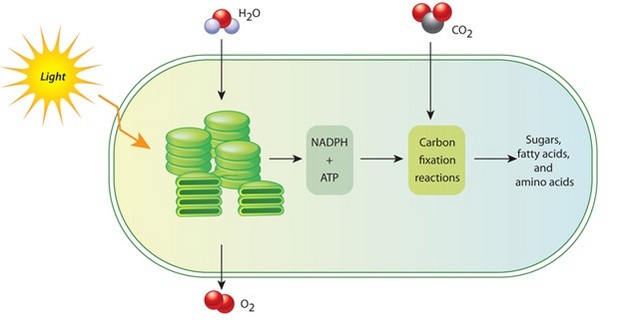The light and dark reactions in the chloroplast
Keywords
Flag Inappropriate
Delete Content

The light and dark reactions in the chloroplast
The chloroplast is involved in both stages of photosynthesis. The light reaction takes place in the thylakoid discs. There, water (H20) is oxidized, and oxygen (O2) is released. The electrons freed up from water are transfered to ATP and NADPH. The dark reaction occurs outside of the thylakoids. In this reaction, the energy from ATP and NADPH are used to fix carbon dioxide (CO2). The products of this reaction are sugar molecules and other organic molecules necessary for cell function and metabolism. Note that the dark reaction takes place in the stroma (aqueous fluid surrounding the stacks of thylakoids) and the cytoplasm.
This image is linked to the following Scitable pages:
The sun is the ultimate source of energy for virtually all organisms. Photosynthetic cells are able to use solar energy to synthesize energy-rich food molecules and to produce oxygen.





















Comments
CloseComments
Please Post Your Comment